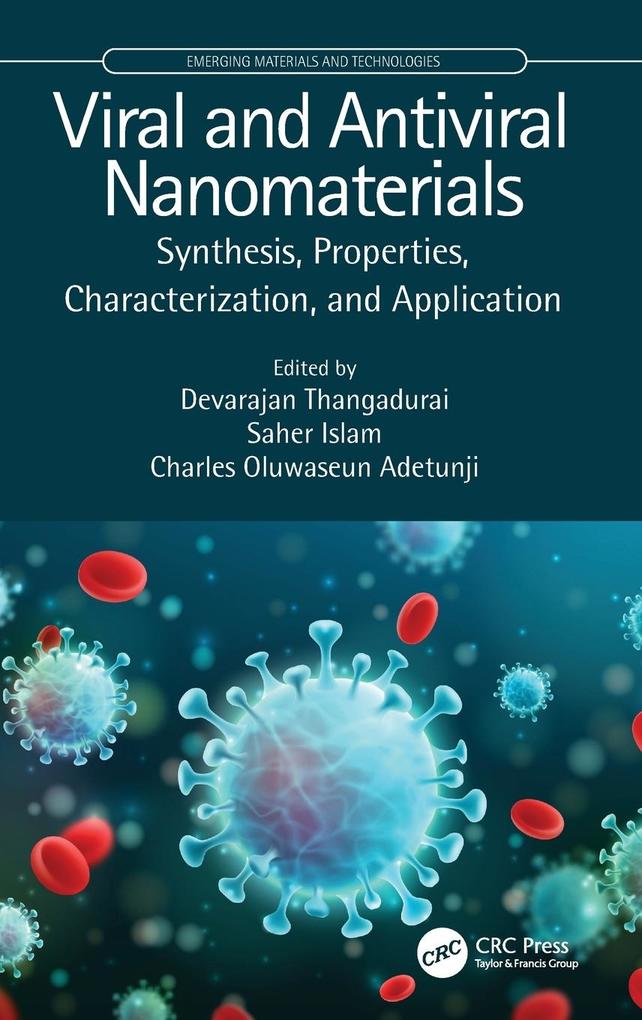This book summarizes the synthesis, properties, characterization, and application of viral and antiviral nanomaterials by using interdisciplinary subjects ranging from materials science to biomedical science. Viral and Antiviral Nanomaterials: Synthesis, Properties, Characterization, and Application highlights attainments in utilizing nanomaterials as powerful tools for the treatment of viral infections in plants, animals, and humans. It reviews the adopted strategies for designing viral and antiviral nanomaterials for medical applications, including cancer therapy and drug delivery. It also explains the different kinds of antiviral nanosized structures, their chemistries, and the attributes that enable them to be suitable targets for nanotherapeutics. The contributors have prepared the content in a comprehensive manner for readers to use their research findings to improve the healthcare of all living beings.
FEATURES
Reviews the novel tools for synthesis and characterization of nanomaterials as viral and antiviral agents
Explores the different applications of currently available nanomaterials for the treatment of viral infections
Investigates the role of antiviral nanodrugs in human and plant systems
Addresses the activity of nanostructures in drug-delivery systems for cancer treatment
Allows readers from various backgrounds to access the advanced research and practices across traditional frontiers
Discusses viral nanomaterials as the viable future of antiviral drugs and nanovaccines in animals and humans
This authoritative book is of exceptional relevance to postgraduate scholars, researchers, and scientists interested in nanomedicine, biomedical science, materials science, biopharmaceutical technology, microbiology, and virology to improve virus- and cancer-based therapeutic tools for animal and human welfare.
Inhaltsverzeichnis
Section I: Nanosized Materials in Virology 1. Viruses as Nanomaterials 2. Synthesis and Characterization of Nanoparticles as Potential Viral and Antiviral Agents 3. Biogenic Synthesis of Nanoparticulate Materials for Antiviral Applications 4. Nanoparticle Synthesis and Administration Routes for Antiviral Uses 5. Role of Nanostructures in Inhibition and Treatment of Viral Infections Section II: Viral Nanomaterials: Biomedical Applications 6. Photocatalytic Inactivation of Pathogenic Viruses Using Metal Oxide and Carbon-Based Nanoparticles 7. Non-Photocatalytic and Photocatalytic Inactivation of Viruses Using Antiviral Assays and Antiviral Nanomaterials 8. Application of Viral Nanomaterials in Medicine 9. Virus-Based Nanocarriers for Targeted Drug Delivery Section III: Antiviral Nanotherapeutics 10. Antiviral Nanomaterials in Therapeutic Interventions 11. In Vivo Study of Anti-In uenza Effect of Silver Nanoparticles in a Mouse Model 12. Antiviral Drugs as Tools for Nanomedicine 13. Emerging Nanotechnology-Enabled Approaches to Mitigate COVID-19 Pandemic 14. Applications of Antiviral Nanoparticles in Cancer Therapy 15. Nano Delivery of Antiviral Plant Bioactives as Cancer Therapeutics 16. Conjugated Graphene Gold Nanocomposites for Cancer Therapy 17. Surface Engineered Graphene Oxide and Its Derivatives: A Prospective Nano-Structured Carbon as Anticancer Agent 18. Antiviral Nanomaterials as Potential Targets for Malaria Prevention and Treatment













